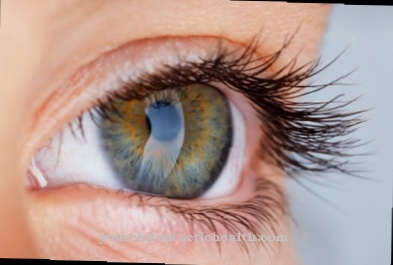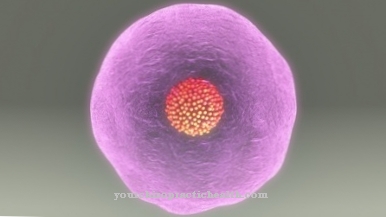Of the Stepper gear is a typical gait change as a result of paralysis of the foot lifters. This compensatory movement process can be caused by many diseases and injuries.
What is the stepper gait?

The stepper gait occurs when the foot lifters (dorsal extensors) fail due to neurological disease or lesions. A gait change occurs, which is characterized by a compensation mechanism with which the lack of function of the paralyzed muscles is compensated.
If the foot lifters are no longer supplied, the foot can no longer be lifted while walking, it then hangs down limply and the toes drag over the ground in the swing leg phase. To avoid this process, the affected people raise their legs so that their toes are floating in the air. The increased lifting occurs mainly through increased hip flexion.
The second aspect that characterizes this change in gait pattern can be observed when putting on the feet and can also be heard with the appropriate footwear. The standing leg phase cannot be initiated with the heel touchdown as usual. Rather, the front part of the foot, sometimes the entire sole of the foot, splashes on the floor.
Usually the term stepper gait is only used when both legs are affected. However, a unilateral failure triggers the same changes unilaterally.
Function & task
The stepper gait is a protective mechanism designed to reduce the risk of falling while walking, especially if the motor failures are accompanied by sensitive disorders. In some diseases that cause the flaccid paralysis of the foot lifters, surface and depth sensitivity can also be affected. In both cases, little or no information about the conditions on the foot is sent from the receptors to the central nervous system. The sick do not feel that the foot is dragging across the floor and they receive no information about the position of the foot in the joints and in the space.
Especially in the initial phase, when other senses, especially the visual sense, have not yet taken over the compensatory orientation, the risk of falling is very high as a result of the sensory and motor deficits. Raising the legs reduces the chance of the foot getting stuck while walking and reduces the worry of falling.
The gait modification also has the purpose of ensuring that the sequence of movements can be completed as smoothly and quickly as possible under the given circumstances. If one foot is pulled across the ground with the toes in every swing leg phase, this impedes the flow of the gait and the gait speed enormously and the effort increases. However, as a rule, the normal walking speed is no longer achieved, due to the changed motor processes and because the movements are carried out with significantly more care. The automatic gear is disturbed.
Another aspect that also plays a role in the pronounced lifting of the leg is the uncomfortable feeling that arises when the shoe is pulled across the floor and damaged.
The possibilities of compensation through the stepper walk reach their limits when walking uphill or upstairs. The height that has to be overcome with these demands already requires increased hip flexion, which is almost completely exhausted on steep terrain even with normal function of the foot lifter.
You can find your medication here
➔ Medicines for balance disorders and dizzinessIllnesses & ailments
The failure of the foot lifters can have various causes. Pressure damage to the common fibular nerve, which is a branch of the sciatic nerve and supplies the dorsal extensors, often occurs when a cast that is too tight is applied to the lower leg. The impairment is often noticed too late, so that the nerve is irreversibly damaged and the motor impairment cannot be reversed. External violence or errors in leg operations can also damage the nerve structures and cause temporary or permanent paralysis of the muscles supplied. The consequences of the damage described are purely motor-driven and usually only affect one side, so that half a stepping step is created.
Polyneuropathy is a disease caused by diabetes, excessive alcohol consumption, drug abuse, or other factors. It attacks both the motor and the sensitive branches of nerves and destroys the protective insulating layer. As a result, the impulses to the muscles and the information from the receptors to the spinal cord are partially or completely lost. The disease often affects the foot and its surroundings and, due to the gradual failure of the foot muscles and sensitivity, causes increasing gait uncertainty, which can be compensated for for a while by a moderate stepping gait.
Poliomyelitis, which in Europe is mostly only seen in older people, can also affect the foot lifters. It is an inflammatory disease caused by the poliovirus. This can have consequences for the central nervous system, but also for the second motor neuron (the rapid nerve conduction that transports the movement impulses from the spinal cord to the muscles).
A failure of certain branches leads to bilateral paralysis of the foot muscles and thus also the foot lifter.
Rare muscle diseases, such as genetically caused neural muscle atrophy or myotonic dystrophy, also affect the foot lifts and usually lead gradually to muscle atrophy, which affects the gait pattern. It is precisely with these diseases that the double-sided stepping step occurs.
























.jpg)



